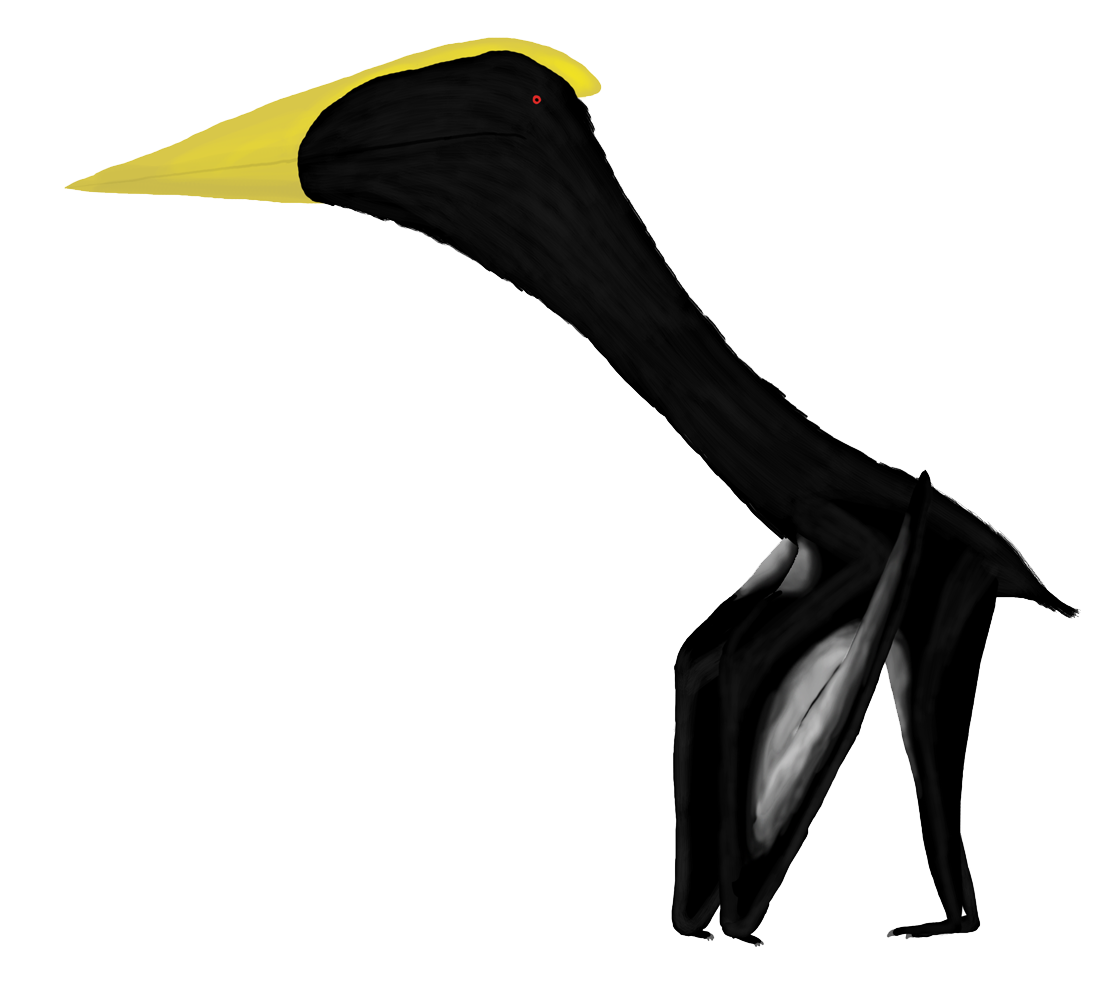Zhejiangopterus

|
|
|
Zhejiangopterus is a compartaively small azhdarchid pterosaur. Before Zhejiangopterus's discovery, azhdarchid anatomy was largely unknown. Multiple complete specimens were unearthed, giving us the first good look of azhdarchid physiology. Zhejiangopterus has a long, narrow toothless skull, no teeth, a really long neck and limbs, and a small body. Azhdarchids such as Zhejiangopterus were terrestrial stalkers, roaming open areas snatching prey from above in a manner similar to modern storks. The long neck and limbs give the head a vantage point from which it can strike without the prey noticing. The wing proportions of Zhejiangopterus indicate long-distance soaring flight - although they prefer to move about on the ground. Zhejiangopterus is our only azhdarchid. We have a flock of four in an aviary at The Hub, and two more live behind the scenes and appear in the Flight Show. The Zhejiangopterus are closely-knit, and commonly forage as a group. They often engage in bonding behaviors such as preening, calling, and ritual dances. They'll eat about anything they can fit down their gullet. We feed them a mixed diet that variously includes small rodents, fish, fruits, berries, and plant clippings. They all love berries. We scatter food around the aviary two to three times a day - and their natural curiosity means none of it stays hidden for very long! |
Scientific name Location Time Wingspan Wingspan Diet |